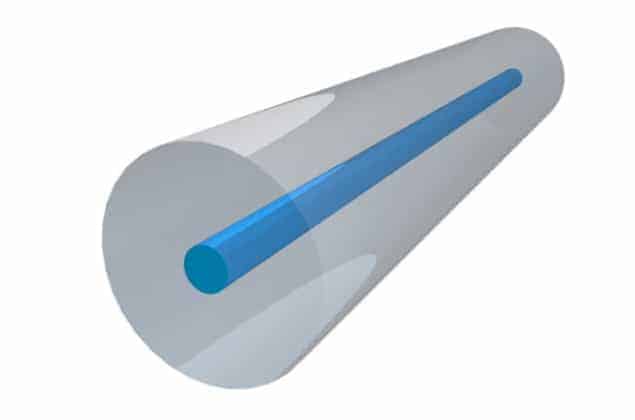
Optical solitons have been generated by firing an intense, ultrashort laser pulse into an optical fibre with a liquid core. The laser pulse interacts with the liquid and is converted into pulses of broadband infrared light (solitons) at wavelengths of 1.1–2.7 μm. Producing infrared solitons had proven difficult in the past and liquid-filled fibres could prove useful for providing broadband infrared light for medical imaging, metrology and spectroscopy.
The work was done by Mario Chemnitz and colleagues at Leibniz Institute of Photonic Technology, the Fraunhofer Institute of Applied Optics and Precision Mechanics, the Friedrich Schiller University of Jena, and the Helmholtz Institute Jena.
Molecules line up
The team used a hollow silica fibre that is filled with carbon disulphide, which is a liquid with a very large index of refraction. When a polarized infrared laser pulse is fired through the core, it begins to align the carbon-disulphide molecules along a specific direction. This modifies the optical properties of the liquid and therefore the propagation of light in the fibre.
An important feature of carbon disulphide is that the molecules are relatively slow to align themselves with the laser pulse. In their experiments, Chemnitz and colleagues used a laser pulse that lasted about 460 fs, which is much shorter than the time it takes the molecules to line up. According to Chemnitz, this delay results in an “optical memory effect” that has a desirable influence on the dynamics of the solitons. In particular, it reduces fluctuations in the bandwidth of the solitons, which means that the liquid-core fibre is a more stable source of broadband light than solid optical fibres made from special glasses.



